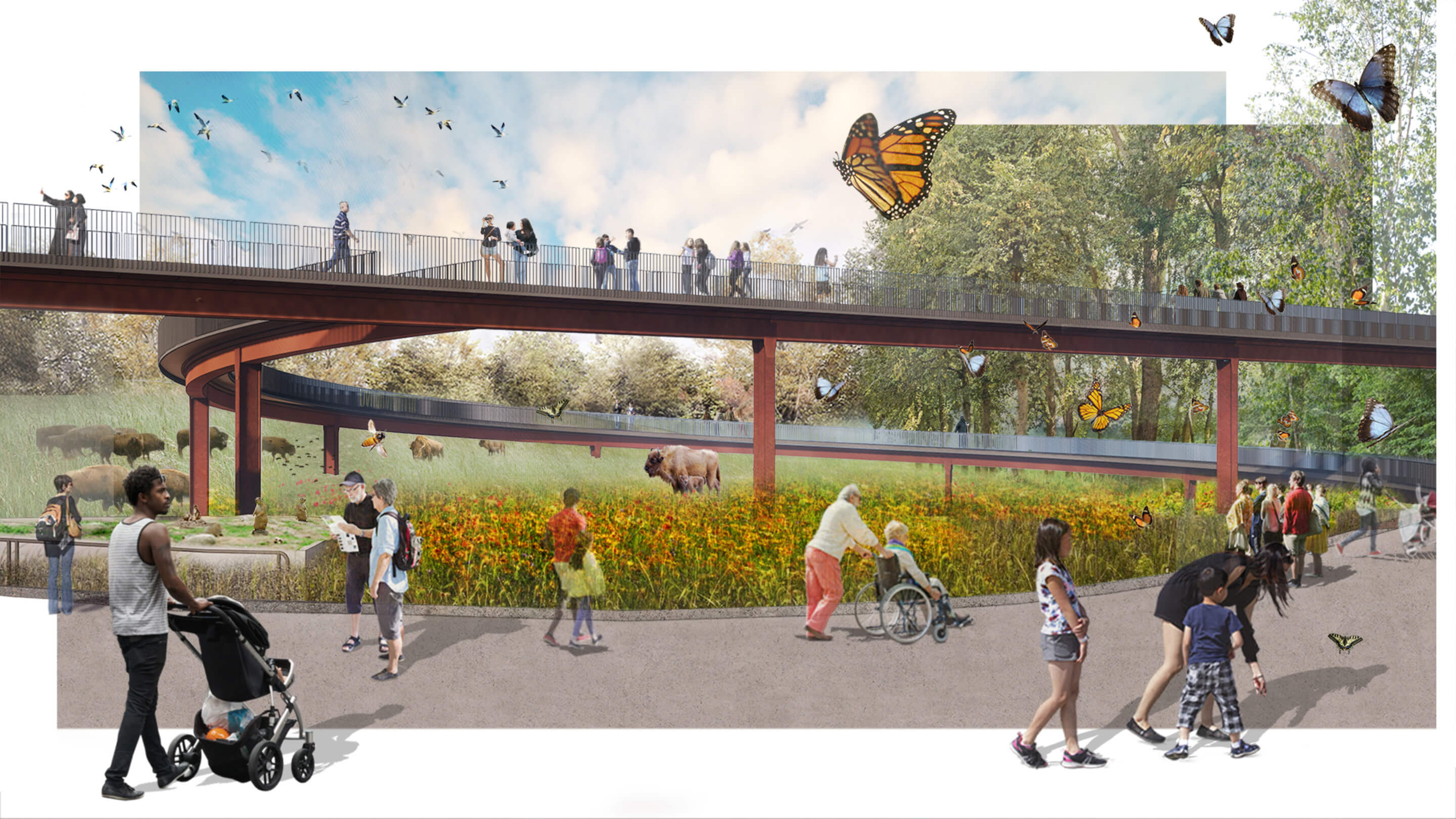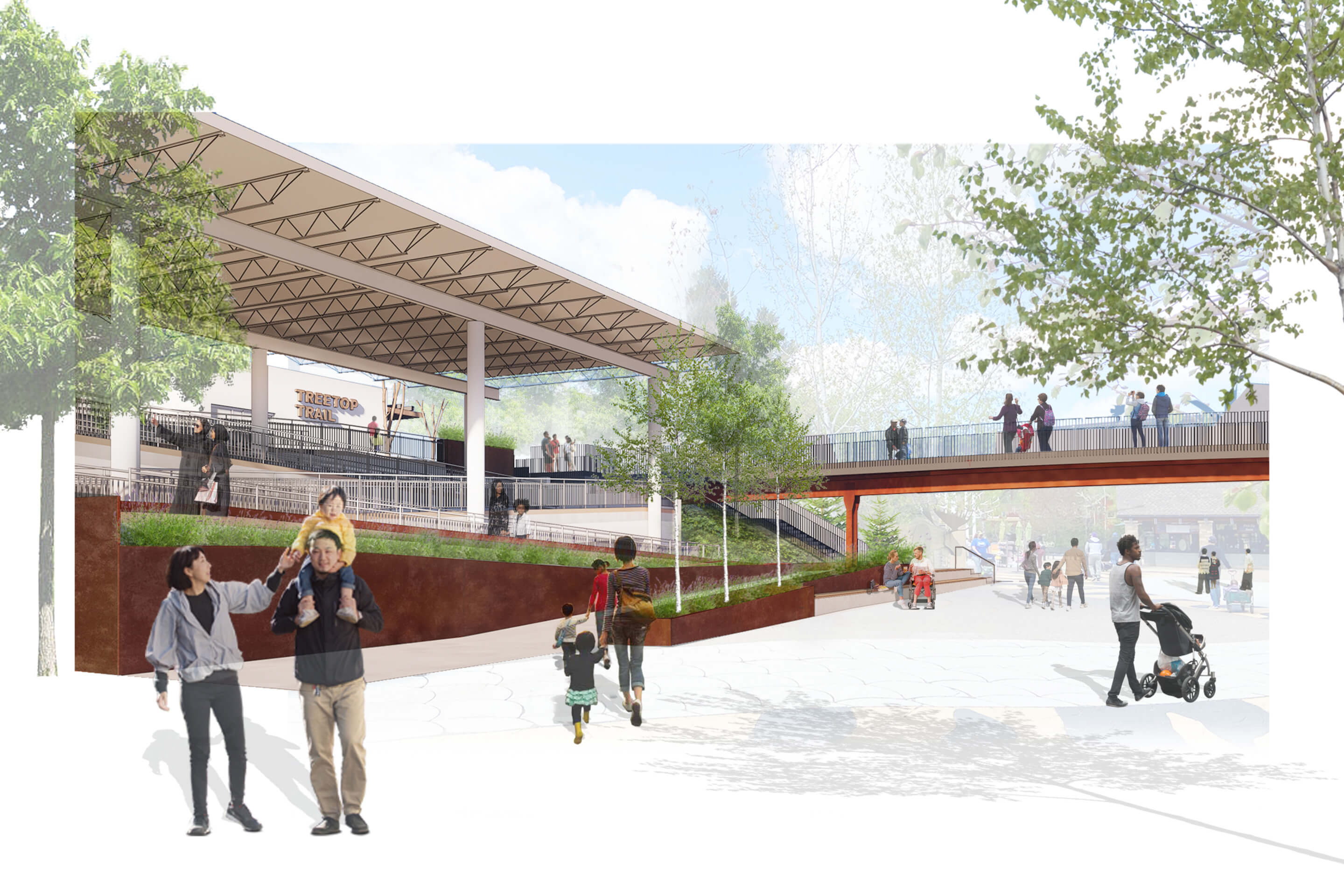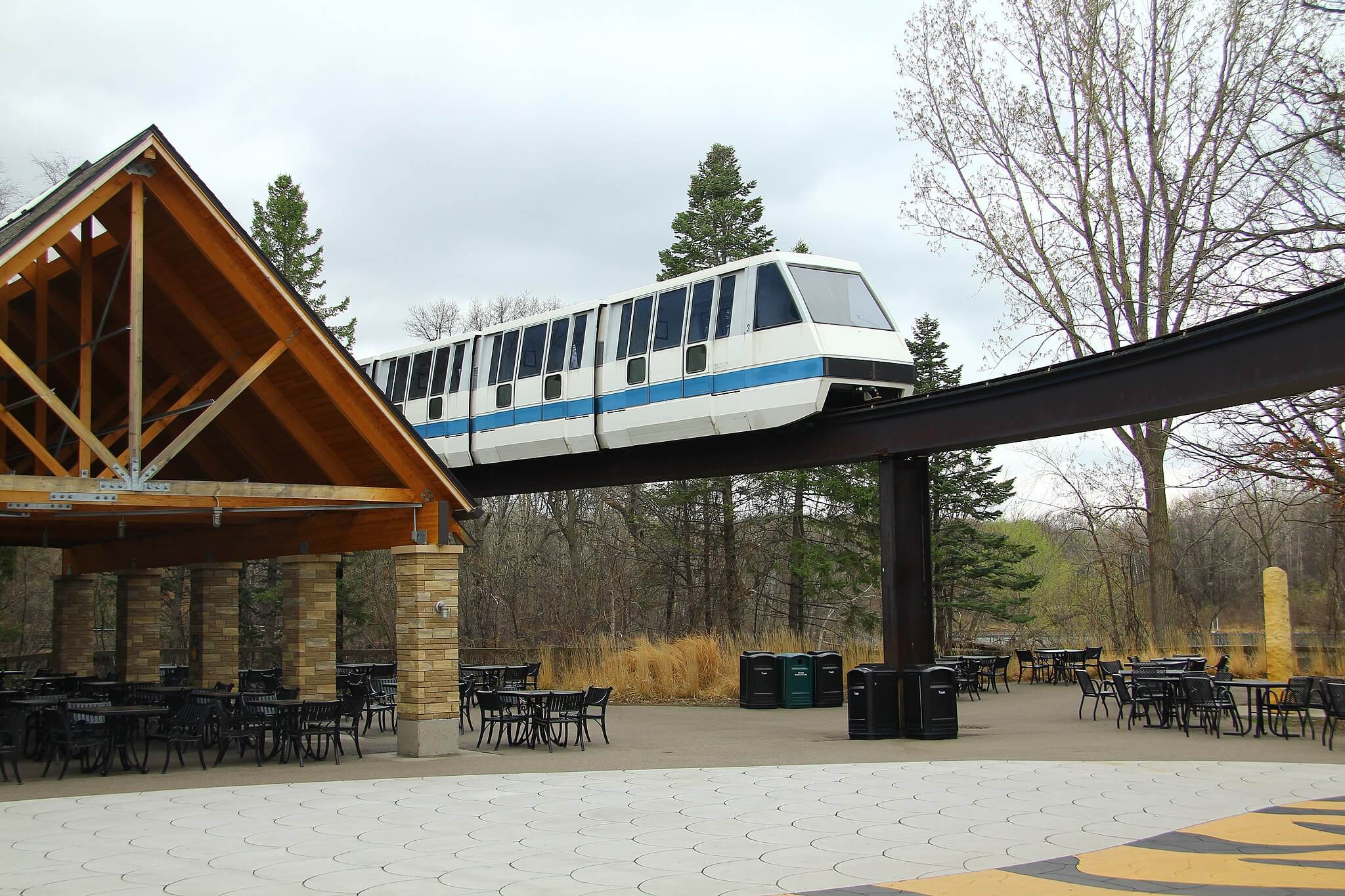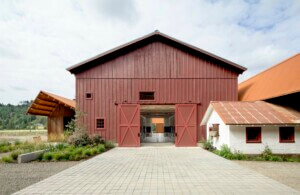When the Skytrail monorail system debuted in September 1979 just a little over a year after the larger opening of the Minnesota Zoo (née the Minnesota Zoological Garden), it was positioned as the (non-living, breathing) attraction at the shiny new facility located just south of the Twin Cities in suburban Apple Valley. The Skytrail, however, was beset with a host of headline-grabbing headaches from early on including early engineering and financing hiccups followed by a lukewarm reception from zoo guests after its (delayed) opening. Over the next three decades, the system, which afforded guests with a birds-eye view of the zoo’s sizable outdoor Northern Hemisphere habitats, was further plagued by a series of woes including temporary closures, electrical malfunctions, and a June 2000 crash that injured more than a dozen riders. In September 2013, the aging monorail system was permanently shuttered due to prohibitive modernization costs, its cars sold off and its track left standing vacant.
In 2019, the Minnesota Zoo announced that the still-standing track would be converted into a 1.25-mile-long elevated pedestrian walkway as part of a years-in-the-works adaptive reuse scheme—a scheme that’s just now taking physical form following a groundbreaking ceremony held late last month. Slated for completion the summer of 2023, the repurposed monorail track, dubbed the Treetop Trail, is billed by the zoo as the world’s longest elevated pedestrian loop. Described by the Minnesota Zoo in a press release as the “ultimate reuse construction project,” the Treetop Trail is designed by Minneapolis-based Snow Kreilich Architects, working in collaboration with project engineer Buro Happold and construction partner PLC. Snow Kreilich first began studying the track structure in 2016 as part of a feasibility assessment.

Work formally commenced on the project after the 485-acre Minnesota Zoo, which is one of only two state-supported zoos in the United States along with the North Carolina Zoo, secured more than 80 percent of its $39 million goal for the defunct monorail track-to-suspended walking loop conversion project. The more than $30 million in funds raised thus far includes both philanthropic contributions and public support along with $11 million in state funding, noted John Frawley, the director of the Minnesota Zoo who also serves as president of the nonprofit Minnesota Zoo Foundation.
“Nature heals, restores, and inspires us,” said Frawley. “The Treetop Trail is a key component of the Zoo’s future. It will reinforce our reputation as a trusted nature destination and is an evolution of the role that zoos play around the globe.”

Per the zoo, the High Line–inspired immersive looping path, located 32 feet above the ground, will “provide new perspectives and access to hundreds of acres of pristine hardwood forest, wetlands, Minnesota wildlife, and, of course, the Zoo’s beloved animals.” The zoo has pledged that any potential disruptions to guests and wildlife alike before, during, and after construction will be minimized.
Designed to withstand the oft-harsh Minnesota elements, the Treetop Trail will feature five “touch-down” points outfitted with elevators and ramps so that visitors of all abilities can easily access the 8-to-12-foot-wide promenade. As detailed by Mpls.St.Paul Magazine, bikes will be verboten on the elevated walkway but wagons, strollers, and wheelchairs will be allowed. A variety of programming including wellness-focused activities like yoga classes along with live music and art events is also in the works.

Although a small handful of North America zoos once boasted monorail systems starting with the long-gone Philadelphia Zoo Safari Monorail in 1969, most, much like the Minnesota Zoo Skytrail, have since gone belly-up in recent years (save for the one at the Bronx Zoo). Most recently, Zoo Miami closed its long-running monorail, which had been in service since 1982. The beloved Adventure Safari Monorail at the Dallas Zoo also recently closed for good due to COVID-related cutbacks.
As of 2019, the Minnesota Zoo was home to more 4,500 animals spread across 550 species, with major exhibits including the Medtronic Minnesota Trail, Discovery Bay, Russia’s Grizzly Coast, the Tropics Trail, and Wells Fargo Family Farm. The zoo’s pre-pandemic annual attendance was nearly 1.3 million.











